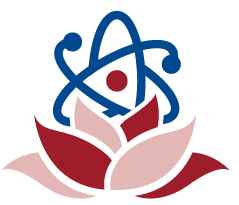| Nutrigenomics ལྗིད་ནོམ་འཚོ་བཅུད་རིག་པ། | biol. | |
| nutrient འཚོ་བཅུད། བཅུད་རྫས། | biol. A substance that an organism takes in and uses for growth and metabolism. Plants absorb nutrients mainly from the soil in the form of minerals and other inorganic compounds. Animals obtain nutrients from the foods they eat or take in. The three most important nutrients for animals are proteins, carbohydrates, and fats. | སྐྱེ་དངོས་ཤིག་གིས་ཟས་སུ་བསྟེན་ཞིང་འཚར་འཕེལ་དང་ནུས་འགྱུར་བྱེད་རིམ་ལ་བེད་སྤྱོད་བྱེད་པའི་བེམ་རྫས་ཤིག་ལ་ཟེར། རྩི་ཤིང་གིས་བཅུད་རྫས་ནི་ས་གཞི་ནས་གཙོ་བོ་གཏེར་རྫས་དང་སྐྱེ་བྲལ་འདུས་རྫས་ཀྱི་ངོ་བོའི་ཐོག་ནས་ལེན་པ་དང་། སྲོག་ཆགས་ཀྱིས་ཟས་སུ་སྤྱོད་པའི་ཟ་མ་ནས་བཅུད་རྫས་ལེན་གྱི་ཡོད། སྲོག་ཆགས་ལ་གལ་གནད་ཆེ་ཤོས་ཡིན་པའི་བཅུད་རྫས་གསུམ་ནི། སྤྲི་རྫས་དང་། ཁར་སྦོ་མངར་རྫས། ཚིལ་བཅས་ཡིན། |
| nurture སྦྱོར་བྱུང་། | neurosci. Upbringing, education, and environment, contrasted with inborn characteristics as an influence on or determinant of personality. | ལྷན་སྐྱེས་ཐུན་མིན་གྱི་ཁྱད་ཆོས་མིན་པའི་འཚར་ལོངས་དང་། ཤེས་ཡོན། ཁོར་ཡུག་ལྟ་བུ་མི་གཤིས་ལ་ཤུགས་རྐྱེན་སྤྲོད་མཁན་ནམ་མི་གཤིས་ཐག་གཅོད་པའི་བྱེད་རྐྱེན་དུ་ངོས་འཛིན་པ་ལ་གོ |
| numerical analysis གྲངས་འབྲེལ་དབྱེ་ཞིབ། | math. The analysis of problems by means of calculations involving numbers rather than analytical formulae. | དབྱེ་ཞིབ་ཀྱི་སྤྱི་འགྲོས་ལ་བརྟེན་པ་མ་ཡིན་པར་གྲངས་ཀ་ཡོད་པའི་རྩིས་རྒྱག་པ་ལ་བརྟེན་པའི་དཀའ་གནད་ཀྱི་དབྱེ་ཞིབ་བྱེད་ཐབས་ཤིག |
| nullizygous རིགས་དམན། | biol. | |
| Null hypothesis སྟོང་པའི་ཚོད་གཞག | Res. | |
| nuke ལྟེ་རྡུལ་མཚོན་ཆ། | phys. | |
| nucleus accumbens ཉེ་འདབས་སྙེ་རིལ། | neurosci. Portion of the basal ganglion that regulates motor activities and that is the ‘seat’ of reward or punishment situations; a part of the limbic system. | འགུལ་སྐྱོད་ཀྱི་བྱ་འགུལ་ལ་སྟངས་འཛིན་བྱེད་ཅིང་བྱ་དགའམ་ཉེས་པའི་གནས་སྟངས་ཀྱི་གནས་ས་ཡིན་པའི་གནས་ཞབས་རྩ་འདུས་ཀྱི་ཆ་ཤས་དེ་ལ་གོ་བ་དང་། འདི་ནི་མཐའ་འཁོར་མ་ལག་གི་ཆ་ཤས་ཤིག་ཡིན། |
| nucleus (nuclei) ལྟེ་རྡུལ། | phys. Positively charged center of an atom, which contains protons and neutrons and has almost all the mass of the entire atom but only a tiny fraction of the volume. | (མང་ཚིག་ nuclei) རྡུལ་ཕྲན་གྱི་ལྟེ་བ་སྟེ་ཕོ་རྡུལ་དང་བར་རྡུལ་ཡོད་ས། འདི་ཡིས་རྡུལ་ཕྲན་གྱི་གདོས་ཚད་ཕལ་ཆེ་བ་ཟིན་མོད་བོངས་ཚད་ཆུང་ངུ་ལས་ཟིན་མེད། |
| nucleus ལྟེ་ཉིང་། ཉིང་རྡུལ། | biol. The central part of most cells that contains genetic material and is enclosed in a membrane. | ཕྲ་ཕུང་ཕལ་ཆེ་བའི་ལྟེ་བའི་ཆ་ཤས་ཏེ། ནང་དུ་རིགས་རྫས་ཡོད་ཅིང་མཐའ་རུ་སྐྱི་མོས་བཏུམ་པ་ཞིག |
| nucleus གོང་བུ། ཆུན་བུ། ཚོམ་བུ། | neurosci. A group of cell bodies of nerve cells in the brain or spinal cord. | ཀླད་པའམ་རྒྱུངས་པའི་ནང་དུ་ཡོད་པའི་དབང་རྩ་ཕྲ་གཟུགས་ཀྱི་ཕྲ་ཕུང་གི་ལུས་དུ་མ་ཚོགས་པའི་སྡེ་ཚན་ལ་གོ |
| nucleotide ཉིང་རྡུལ་གྲུབ་ཆ། | biol. A subunit of DNA or RNA that consists of a nitrogenous base, a phosphate molecule, and a sugar molecule. Thousands of nucleotides are linked to form a DNA or an RNA molecule. | ཌི་ཨེན་ཨེའམ་ཨར་ཨེན་ཨེ་ཡི་གྲུབ་ཆ་ཞིག་ལ་གོ་ཞིང་། དེའི་ཁོངས་སུ་ཟེ་རླུང་དང་ལྡན་པའི་བུལ་ཚྭ་ཞིག་དང་། འོད་ཀྱི་མ་མའི་འདུས་རྡུལ་ཞིག མངར་རྫས་ཀྱི་འདུས་རྡུལ་ཞིག་བཅས་འདུས་ཡོད། ཉིང་རྡུལ་གྲུབ་ཆ་སྟོང་ཕྲག་མང་པོ་སྦྲེལ་མཐུད་བྱས་ཏེ་ཌི་ཨེན་ཨེའམ་ཨར་ཨེན་ཨེ་འདུས་རྡུལ་འགྲུབ་ཀྱི་ཡོད། |
| nucleosynthesis ལྟེ་རྡུལ་སྦྱོར་གྲུབ། | phys. The formation of heavier elements from lighter elements by nuclear fusion in stars | སྐར་མའི་ནང་དུ་བྱུང་བའི་ཡང་བའི་རྩ་རྫས་ཀྱི་ལྟེ་རྡུལ་འདྲེས་འགྱུར་བྱུང་བ་ལ་བརྟེན་ནས་ལྕི་བའི་རྩ་རྫས་གྲུབ་པ་ལ་གོ |
| Nucleosome ལྟེ་གཟུགས། | biol. | |
| Nucleophile གློག་རྡུལ་སྦྱིན་སྡེ། | chem. | |
